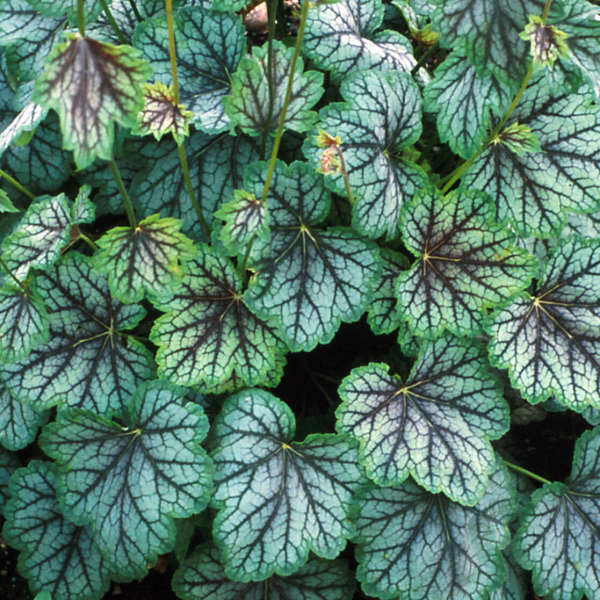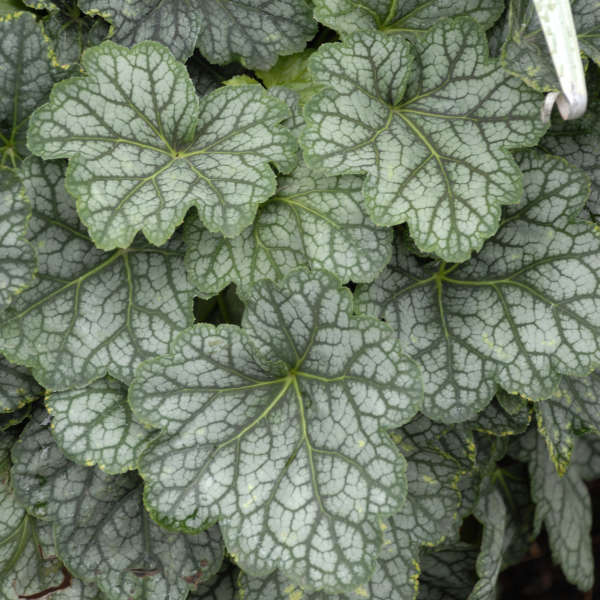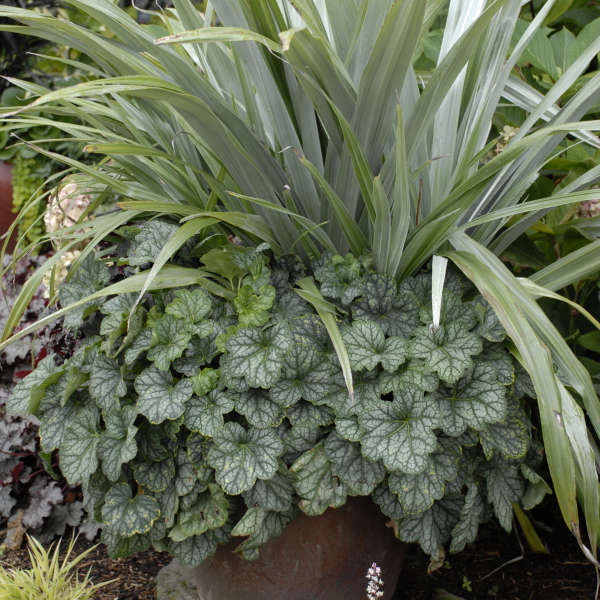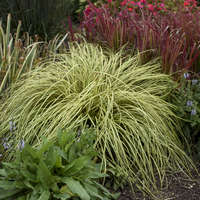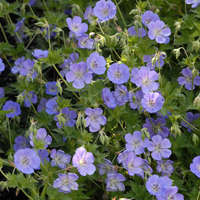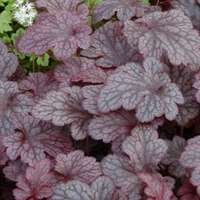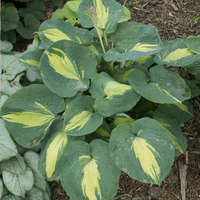Heuchera 'Green Spice' COPF
Common Name: Coral Bells
This one will really spice up your shade garden! The broad, green leaves of this variety have a silvery overlay, darker green edges, and outstanding beet-red veination. These colors are particularly strong during the cooler months.
In early summer, tiny cream flowers are produced on 28 inch scapes. Extending its ornamental value even further into the season, the leaves take on brilliant shades of red and orange in the fall. This heuchera goes with everything--It's a must-have for the garden!
Coral bells are easy to grow and blend easily with most other perennials in the landscape. Because of their low, mounding habit, they are often used as edging along paths or in containers. Try cutting a few of the tall flower scapes for fresh bouquets.
